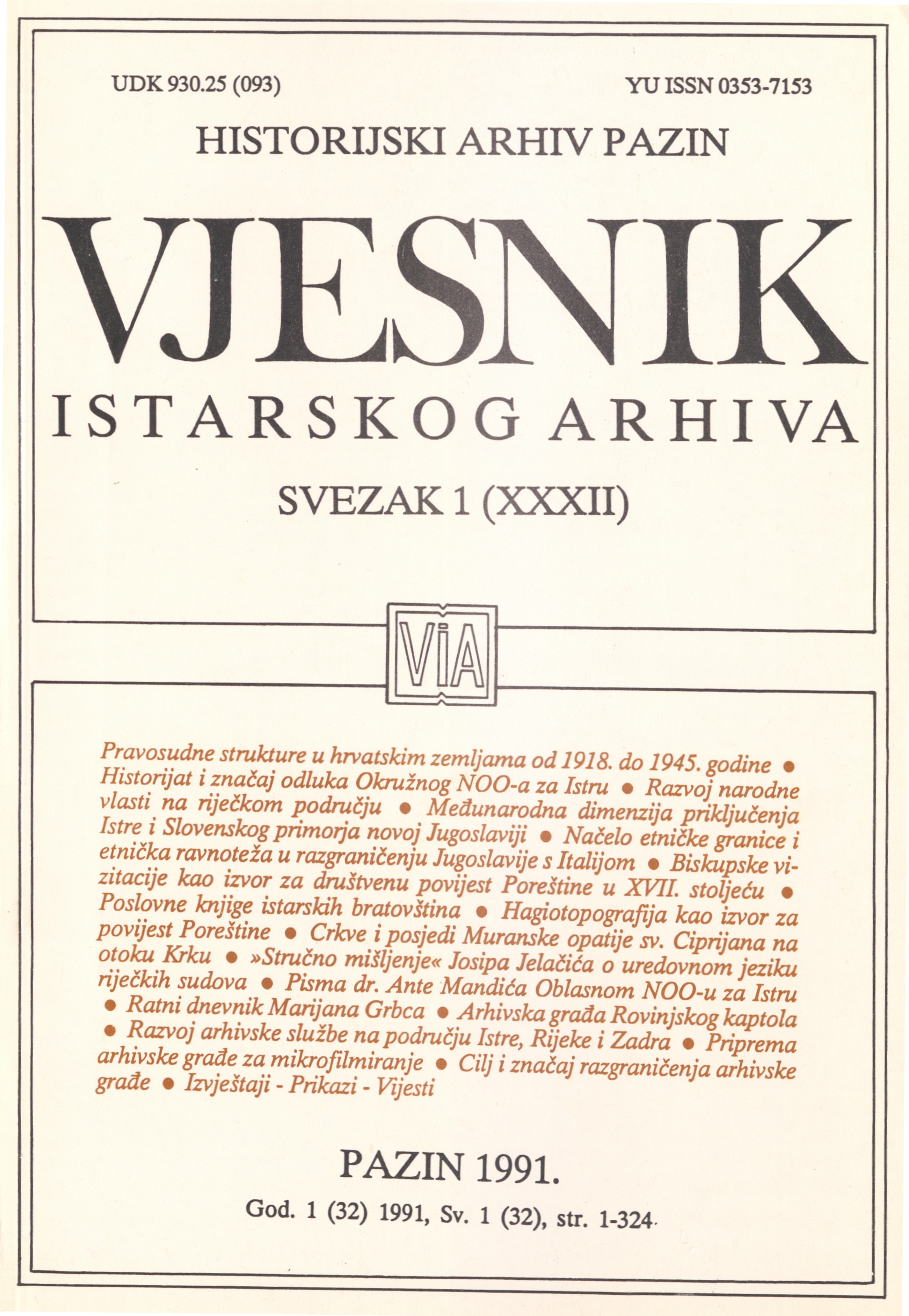The Ethnic Principles Applied in the Border Agreements between Yugoslavia and Italy (1945-1977)
Abstract
Since September 1945 the Allies’ foreign ministers had more talks on the new borders to be drawn between Yugoslavia and Italy. The Allies’ proposals were motivated by their respective interests and their belief in their exclusive right to have a final say in almost all post-war border questions put on the agenda. The big powers were inclined to exploit these as well as other issues to set the stage for their future political moves. The Yugoslav arguments in relation to the border dispute with Italy departed from the principle of ethnic boundaries. In other words, the Yugoslav party advocated the need to define the borders in a way which would leave in each state a minimum number of members of the other ethnic group. The Italian party insisted on the »ethnic equilibrium« to be applied to the disputed territory, with the borderlines to be drawn in a way which would leave in each state an »equal« number of the other nationality. How and why the »ethnic equilibrium« prevailed over the »ethnic borders« in the post-war Yugoslav-Italian border settlements can be explained by growing differences among the big powers. That is why an allies’ mediation committee, set up with the task to establish the actual state of affairs in the disputed border area, submitted to the Four Powers’ Ministerial Council four different proposals instead of one. At its closed sessions the Council accepted the French proposal, which, however, left many problems unsolved, such as that of Trieste and its immediate surroundings. Anyway, the Paris Peace Conference of February 1947 accepted the French proposal on the Yugoslav-Italian border, although neither interested party was satisfied with it. The Free Territory of Trieste was one of the most acute crisis spots in Europe until 1954 when an agreement was reached in London to fix the Yugoslav-Italian border by abolishing the Free Territory of Trieste i.e. its Zones A and B. Minor border adjustments and other important arrangements were being made in the next twenty years between the two states, which was all crowned by the Osim/Ancona Agreement ratified by the Parliament of Yugoslavia in 1977. In view of the need to maintain friendly coexistence in this area under the new conditions, one can say today that a combined concept of »ethnic borders« and »ethnic equilibrium« has ultimately produced optimum results. The international agreement of 1947, considered unsatisfactory at the time, has proved after all to be acceptable to both parties. For the border solution outlined by that agreement has, in spite of all, been serving as a basis for continued negotiations and cooperation between Italy and Yugoslavia.
Downloads
Published
Issue
Section
License

This work is licensed under a Creative Commons Attribution-NonCommercial 4.0 International License.

